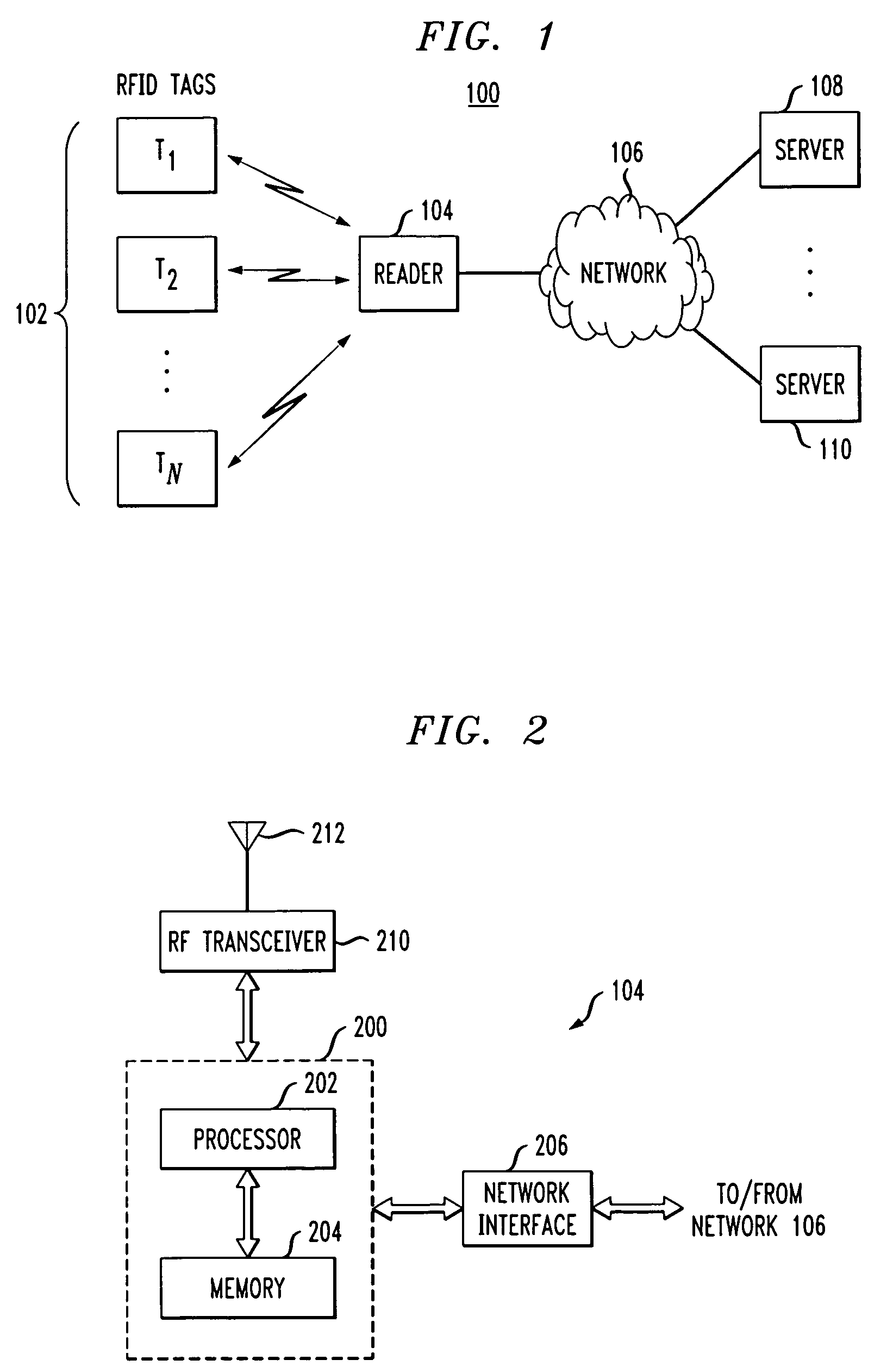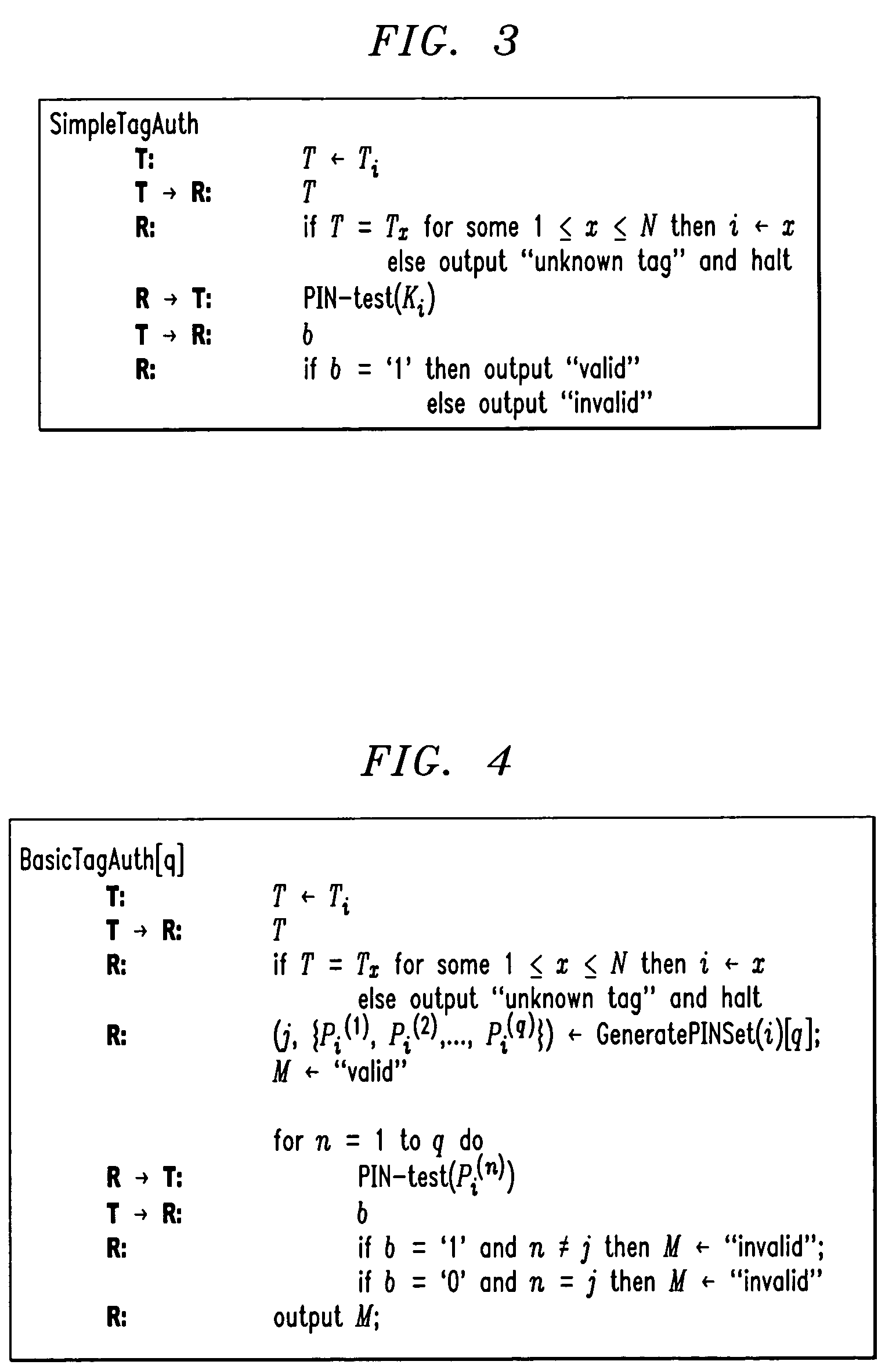Methods and apparatus for RFID device authentication
a technology of radio frequency identification and authentication method, applied in the field of radio frequency identification (rfid) tags, can solve the problems of poor authentication method, epc tags are vulnerable to counterfeiting or other types of cloning attacks, and typically cost significantly more than epc tags, and achieve the effect of simple and efficient techniques
- Summary
- Abstract
- Description
- Claims
- Application Information
AI Technical Summary
Benefits of technology
Problems solved by technology
Method used
Image
Examples
Embodiment Construction
[0029]The present invention will be described herein with reference to an exemplary RFID system in which multiple RFID devices communicate with an RFID device reader. It is to be appreciated, however, that the invention is not restricted to use in this or any other particular RFID system configuration.
[0030]The term “RFID device” as used herein is intended to include an RFID tag or any other type of device configurable for transmission of device-identifying information via radio frequency communications. Although the following description will refer primarily to EPC tags, it is to be understood that the techniques disclosed are applicable to other types of RFID tags, and more generally applicable to other types of RFID devices. Also, the terms “radio frequency” or “RF” as used herein are not intended to be restricted to any particular frequency range, but are instead intended to be construed more generally so as to encompass any contiguous or non-contiguous arrangement of one or mor...
PUM
 Login to View More
Login to View More Abstract
Description
Claims
Application Information
 Login to View More
Login to View More - R&D
- Intellectual Property
- Life Sciences
- Materials
- Tech Scout
- Unparalleled Data Quality
- Higher Quality Content
- 60% Fewer Hallucinations
Browse by: Latest US Patents, China's latest patents, Technical Efficacy Thesaurus, Application Domain, Technology Topic, Popular Technical Reports.
© 2025 PatSnap. All rights reserved.Legal|Privacy policy|Modern Slavery Act Transparency Statement|Sitemap|About US| Contact US: help@patsnap.com



